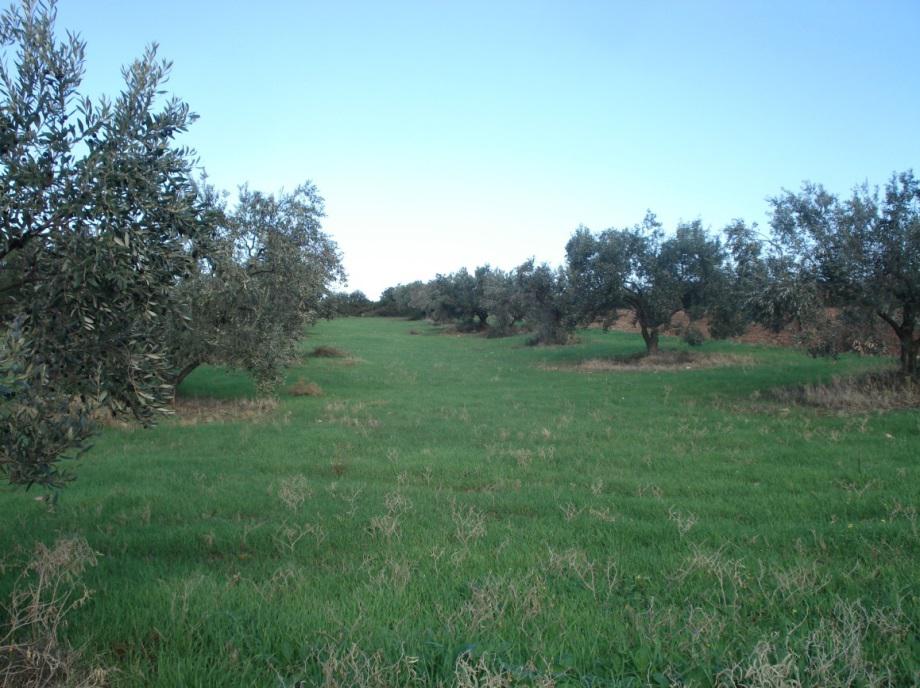
Intercropping of olive groves in Greece
Description of system
In northern and central Greece, farmers have historically combined olive production with arable crops in the same plot. This ensures a steady economic return each year irrespective of weather conditions or other hazards.
Initial stakeholder meeting
Two stakeholder group meetings focused on agroforestry for olive groves have been held in Greece. The first, attended by 18 stakeholders, took place at Molos, Fthiotida in Central Greece on 25 June 2014. The second, attended by 14 stakeholders took place in Chalkidiki in Northern Greece on 27 June 2015. In Molos, the positive attributes of agroforestry with olive groves included continued olive production alongside benefits in terms of animal health, control of manure, and the creation of wildlife habitats. In Chalkidiki, olive production combined with biodiversity and wildlife habitats again featured highly. The principal negative effects included the management costs, the administrative burden, the complexity of the work, and issues of mechanisation.
In the discussions, it was identified that intercropping was probably only appropriate where the principal product was olives for olive oil production, rather than edible olives which required a high number of pesticides. Some understorey species were thought to enhance oil quality and flavour. A potential research topic was to investigate the most appropriate type of intercrop.
If you would like to know about the activity of these groups, please contact Dr. Anastasia Pantera (pantera@teiste.gr) of TEI Stereas Elladas, Greece
Download the initials stakeholders reports
Download the initial research and development protocol
Research and development protocols for the two sites were produced in March 2015.
Download the system description
A research update on intercropping olives at Molos in Greece was produced in December 2015 and January 2016.
Lessons learnt
The stakeholder group at Molos in Central Greece focused on the use of chickpeas and oregano as an intercrop for olive production. The three year trial suggests that olive production in the area intercropped with nitrogen-fixing chickpeas was the same as where there was no intercrops and the olive trees received nitrogen fertiliser. There was evidence that the intercropping with chickpeas reduced phosphorus levels in the soil surface.
The stakeholder group at Chalkidiki in Northern Greece focused on the use of barley (with nitrogen and phosphate fertiliser) and barley with common vetch (with phosphate fertiliser) as an intercrop for olive production. The olive trees are reported to have benefited from the intercropping. The yield from the intercropped barley (2.7 t/ha) was similar to the 3 t/ha achieved by barley in a control area. The lesson learnt report highlights that the success of the system requires good field management.